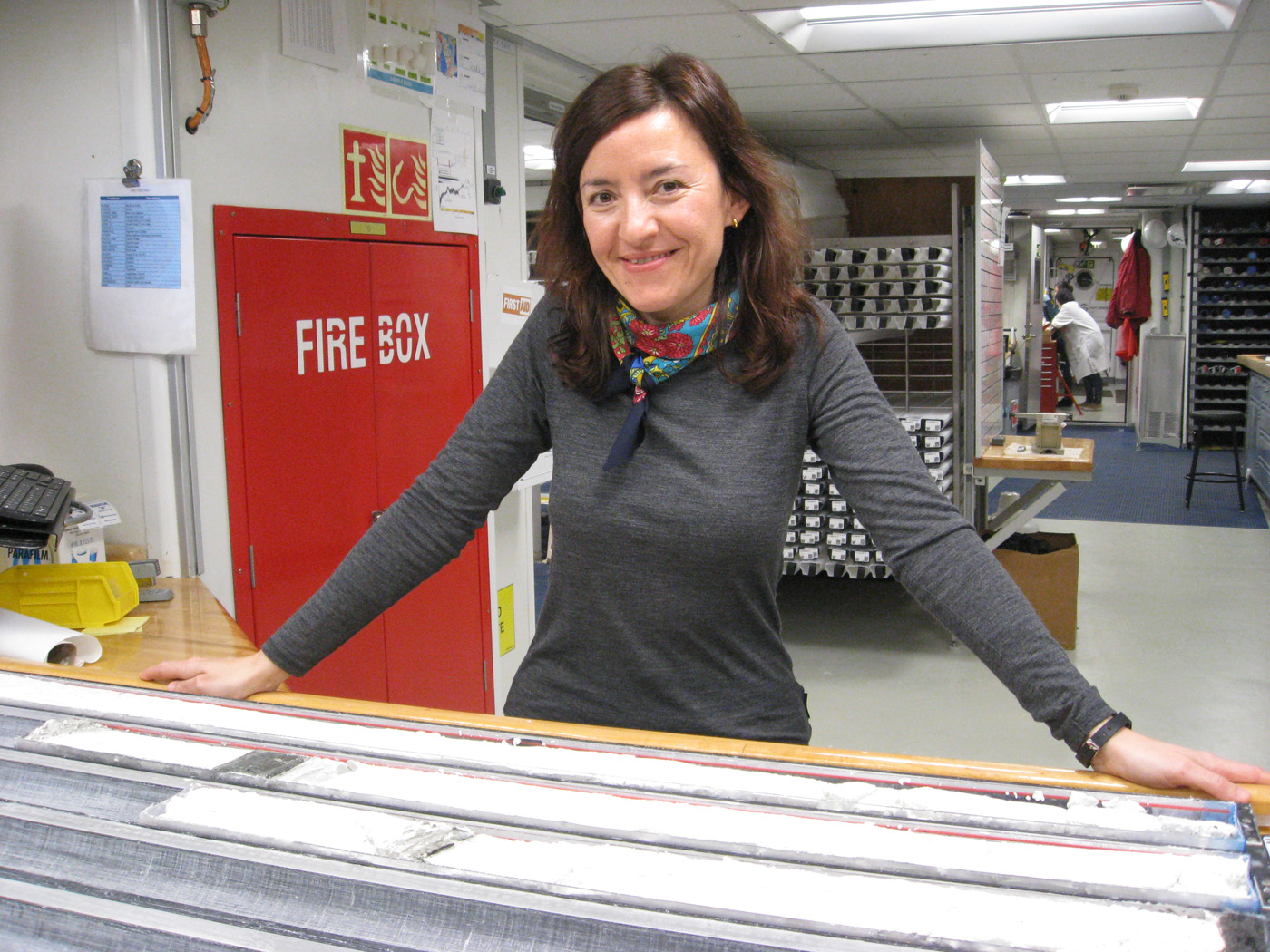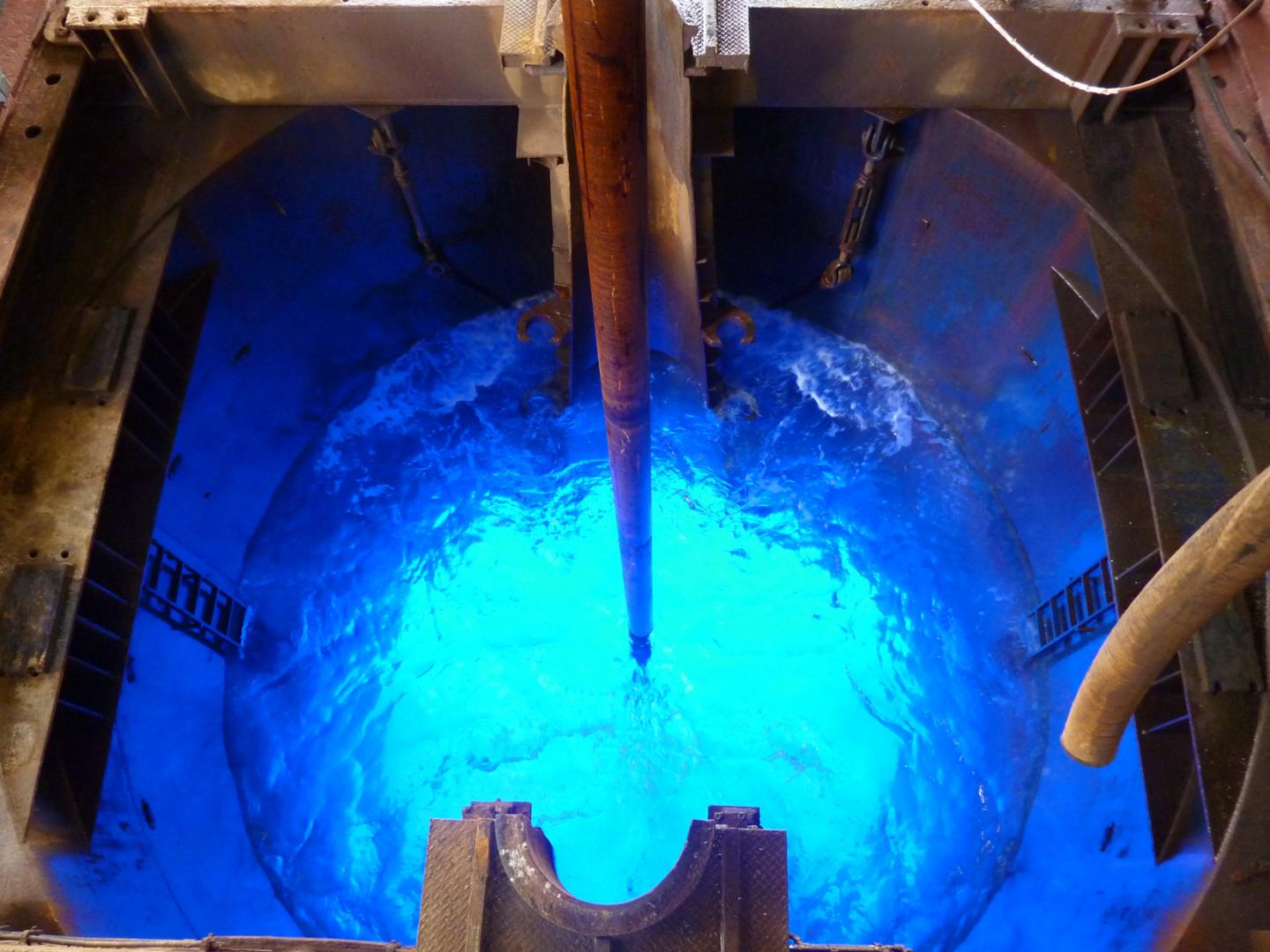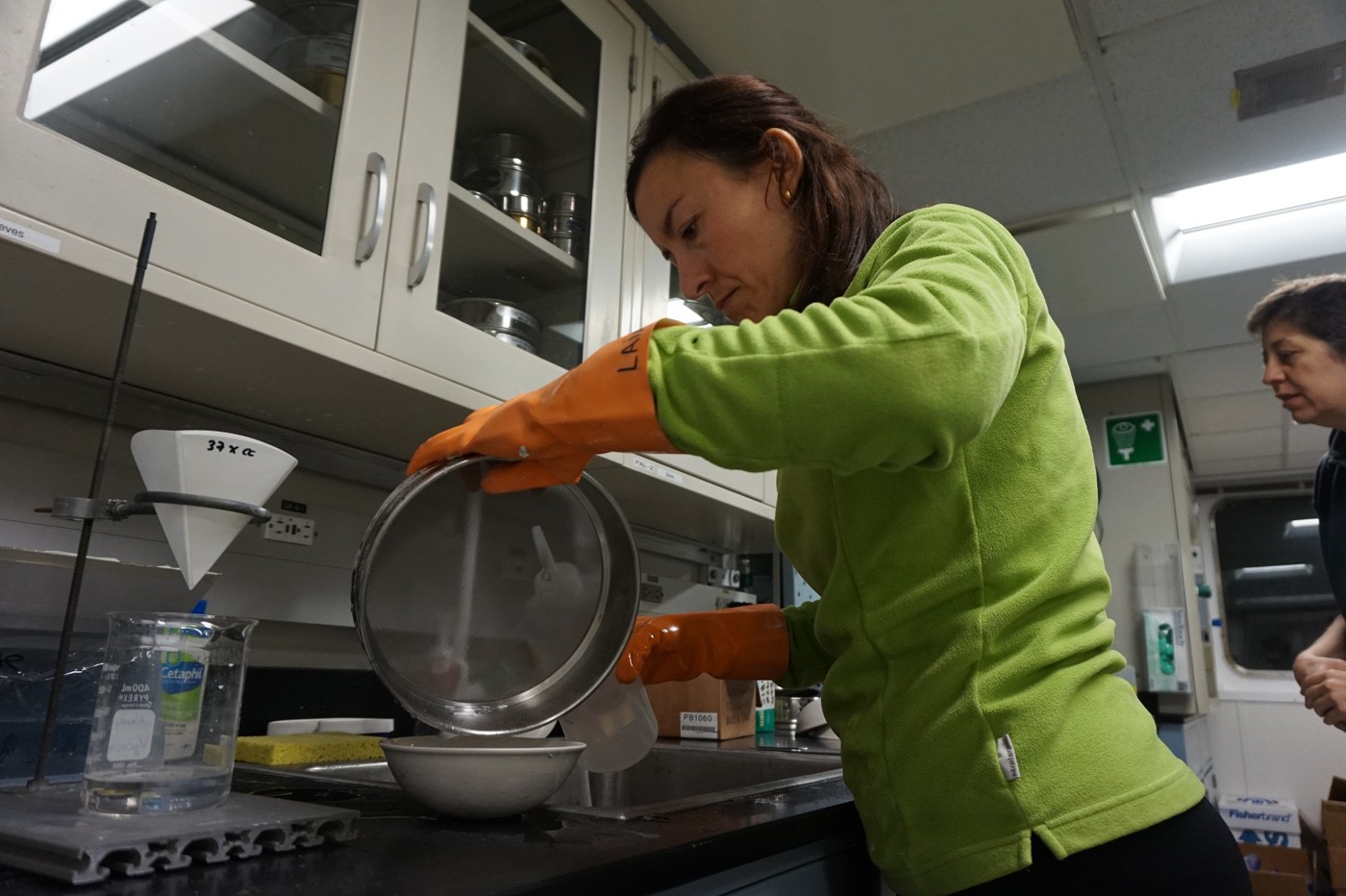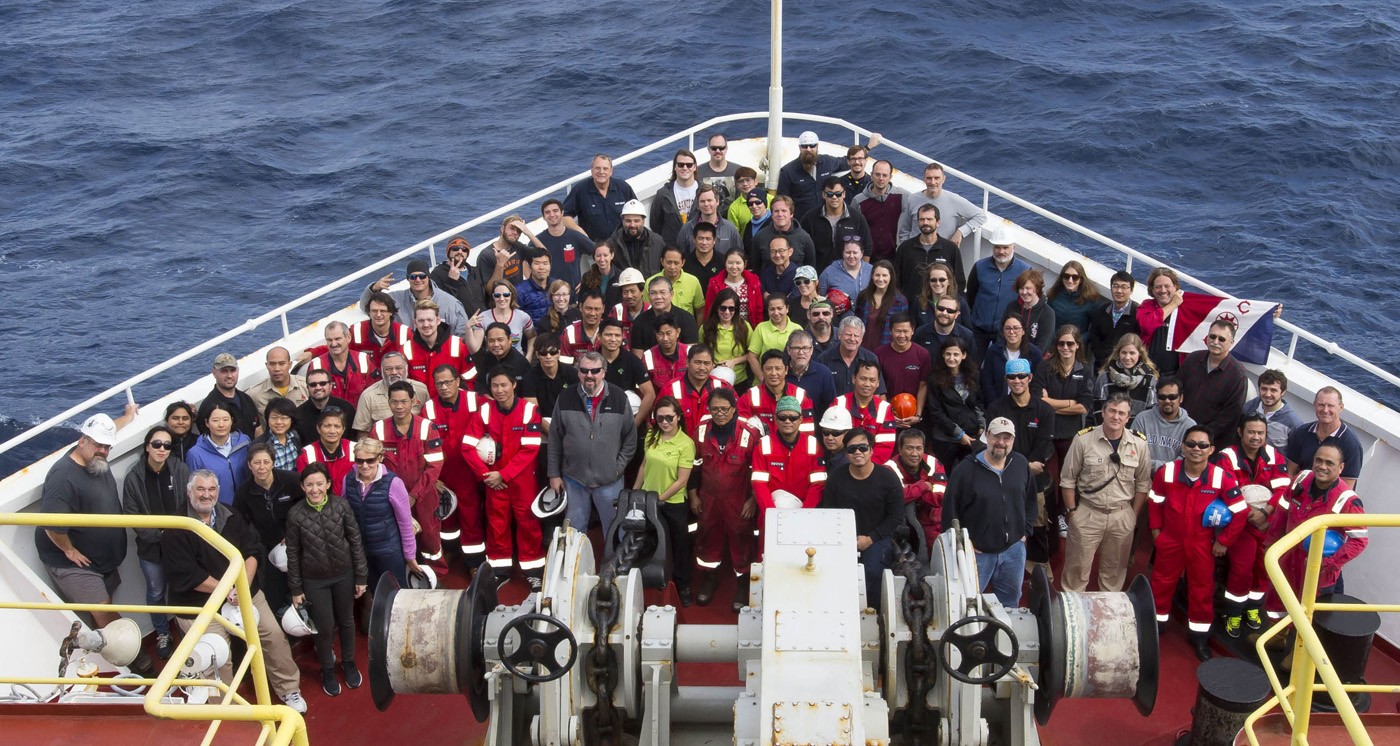
The thrill of discovering a hidden continent
Researcher Laia Alegret, holder of a Leonardo Grant from the BBVA Foundation, is the sole Spanish representative aboard the first oceanographic expedition to explore Zealandia, the ‘eighth continent’ that lies beneath the waters of the Pacific. In this article, she describes the exhausting shifts put in by the team on the ‘Joides Resolution’ and explains the scientific importance of the work being done there.
20 September, 2017
We have spent the last fifty days on the open sea, without setting foot on dry land. Working exhausting 12-hour shifts that end up being 14 hours, what with the daily meeting and the writing of reports. Seven days a week. A lot of us get seasick and on two occasions we have had to flee from giant storms. Why do we do it? Many may assume that we are well paid, but the fact is that the Spanish researchers receive no wages. Not only that, we get no help with the air fares to fly to the ship’s location, in this case on the other side of the world. Other countries, by contrast, not only meet the expenses of researchers and students taking part in this kind of campaign, but also pay them a wage and provide funds for their subsequent research.
The Spanish Government does contribute economically to other kinds of oceanographic campaigns, but the IODP (International Ocean Discovery Program), probably the most successful ever international scientific collaboration (more so even than the international space station in terms of the number of expeditions and results obtained), is permanently overlooked. Perhaps because Spain’s contribution is so modest that there is next to no chance of a Spanish researchers being chosen for an expedition. Then, when the miracle happens, the administration turns its back. Something has to change.
So why are we prepared to work in those conditions, leaving behind our homes, families and friends and breaking off our daily routines for more than two months? Curiosity, scientific vocation and the thrill of exploring an unknown area of the planet, analyzing materials that have lain buried under the seabed for millions of years and having the chance to rewrite the history of geology and life. These are all good reasons. As is the indescribable feeling you get each time a drill sample arrives onboard.
One of the expedition’s co-leads, Rupert Sutherland, sought my opinion recently about a piece he was writing on this expedition for ‘The Conversation’. I thought it was too descriptive and not very appealing for the general public, and suggested he go into more detail on why we do this; what moves us to abandon our daily lives and spend two months shut up in a boat working in less than comfortable conditions, not without danger. The second version I liked a lot more (you can read the whole text here), but I would single out a phrase that came to us while drinking coffee at three a.m.: “It is hard to describe the thrill of discovery. Whenever a new core sample reaches the boat, it is like opening a birthday present. What will it be? It could be a scientific curiosity or perhaps the key that allows us to reconstruct the history of a hidden continent.” After almost two months of expedition, the thrill is as intense as on the first day.
Subsea drilling
The ‘Joides Resolution’ is one of the world’s best subsea drilling vessels. Built in 1978 for hydrocarbon exploration, in 1985 it was refitted as a research vessel for the study of ocean cores. Every year it takes part in five scientific expeditions lasting two months. The specific goals of each relate back to the science plan of the IODP (International Ocean Discovery Program), a successful international marine research program exploring our planet’s history and dynamics that engages with critical issues like the study of climate change, fundamental processes like the movement of tectonic plates or geohazards (volcanism, earthquakes, etc.), the evolution of life on Earth or the design of predictive models.
The 143-meter long ship has a derrick 63 meters high that stands over the ‘moon pool,’ a 7 meters wide opening through which the drillstring is lowered into the ocean. The ‘Joides Resolution’ can drill to depths of up to 7 km.
In addition, the ship has several major machinery spaces, a dynamic positioning system with six powerful thrusters that stabilize the hull while drilling is in progress, and a perfectly coordinated set of human actors.
The 124 of us currently on board include 32 scientists from 14 countries, lab technicians, the drill team and the vessel’s crew. The ship never sleeps and we all work 12-hour shifts seven days a week. At an estimated cost of 13 million dollars per expedition (not including the science staff), not a single minute can be wasted!
As well as a drilling vessel, the ‘Joides Resolution’ is a floating research facility equipped with fully functional labs supporting high-level scientific work. There are labs specializing in geochemistry, geomagnetism, sedimentology, physical properties… In the micropaleontology lab, experts analyze the microscopic fossils contained in the sediments in order to date them and determine the environmental conditions in which they were deposited.
Expedition 371: preliminary results
The samples obtained during Expedition 371 will overturn all existing notions about the evolution of the new continent, Zealandia, which split off from Australia and Antarctica 80 million years ago when dinosaurs ruled the Earth. To date, little has been known about Zealandia, because 94% of it lies hidden beneath the Pacific Ocean.
In our 50 days at sea we have collected over 2 km of ocean cores, and carried out preliminary studies of every kind, including analysis of more than 8,000 marine microfossils. We have discovered that Zealandia’s geography has changed radically in the past 55 million years and have managed to track its movements over the course of time. Areas once lying over 1,500 meters deep have emerged to almost sea level, while the erosion acting on shallower areas has sent sand and shallow-dwelling organisms sinking to the bathyal and abyssal depths.
Many cores contain records of volcanic activity related to Zealandia’s movements, and this seems to denote a close relationship to the Pacific Ring of Fire, a chain of undersea volcanoes whose formation 40-50 million years ago altered the movements of our planet, giving rise to new volcanoes and undersea mountains, the formation of natural resources and changes in global climate.
Further, some cores show evidence of past global warming events; a challenge to science considering that 50 million years ago Zealandia lay near the South Pole. Current models are incapable of reproducing such high temperatures that far south. So how can they hope to predict the consequences of today’s climate change? We are going to study these events in order to refine our predictive models. And we will also take a deeper look at one of our planet’s fundamental processes, tectonic plate movements and subduction, which have controlled geography, geohazards, ocean currents, atmospheric composition, climate, the evolution of life, migrations, the production of natural resources, and, in definitive, the story of Earth from its earliest beginnings.



